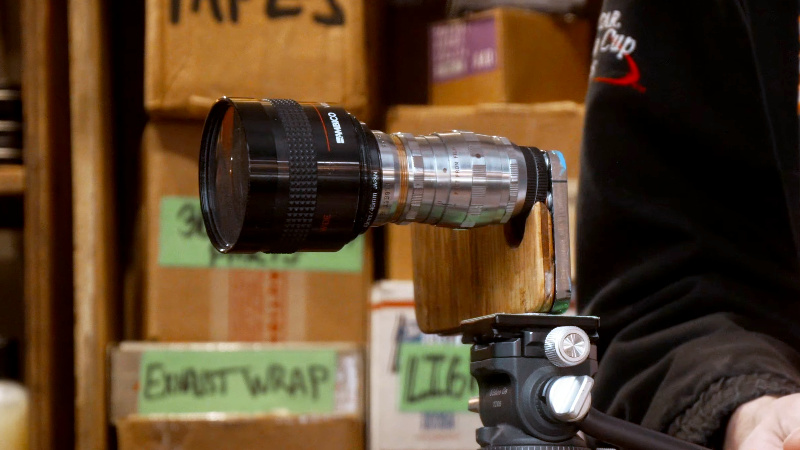The advent of the mobile phone camera has caused a revolution in film making over the last couple of decades, lowering the barrier to entry significantly, and as the cameras have improved, delivering near-professional-grade quality in some cases. Mobile phone manufacturers hire film makers to promote their new flagship models and the results are very impressive, but there is still a limitation when it comes to the lenses. [Evan Monsma] has broken through that barrier, modifying an iPhone to take C-mount cinema lenses.
It’s likely many of us have one or two broken mobile phones around, and even if they aren’t flagship models they’ll still have surprisingly good camera sensors. This one is an iPhone that’s seen better days, with a severely cracked glass back and a dislodged lens cover on one of its cameras. Removing the back and the lens cover reveals the sensor. The video below the break has a lot of woodwork and filing away of the phone, as he modifies a C-to-CS ring to serve as a C-mount. In reality the flange distance makes it a CS mount so his C-mount lenses need an adapter, but as anyone who’s used a Raspberry Pi camera will tell you, that’s no hardship.
The final camera has a thick plywood back with a tripod mount installed, the other two cameras work with their Apple lenses, and the C-mount gives great results with a cinema lens. We’re concerned that the Super Glue he uses to fix it all together might not hold up to the weight of bigger lenses, but we’re here for this project and we love it.
Thanks [Luis Mercado] for the tip.
















Would have been great to see a side-by-side comparison with the regular iPhone lens. Just to compare.
“Why are we not funding this?”
– Peter Griffin
Wow wood! I guess I need to saw out an adapter for a reversed 2 to 1 tele-lens from an old VHS camcorder. In this mode it makes an impressive fish-eye lens on my phone. Round vignetting, the phone will shoot 1to1. I just hold it in place and can see what it gets.
Strength aside, superglue + optics = bad idea. It off-gasses like crazy and can cause fogging of the lenses.
I would think the biggest problem with using super glue would be the vapor depositing on all those critical optical parts like sensors and lenses…
This is that youtubee 101 lame trick, “do weirdly/cost-inefficient/useless stuff with an iProduct to get views”.
Who still fall for it ?
Really nice! Check pawn shops and “antique” galleries for lenses for Bolex, both H8 and H16. You can find Switar lenses and once in a while the coveted Macro-Switar 25mm. If you find the 10mm, maybe sell it and buy a used car. Bolex also made a dual-8 and a rather amazing big zoom lens in that size.
I think eBay sellers know what they are worth. The H8 Macro-Switars are affordable. The C mount ones are kinda crazy. But considering they were made for film pictures about the size of an iPhone camera sensor, and meant to project onto very big screens, they are very nice.